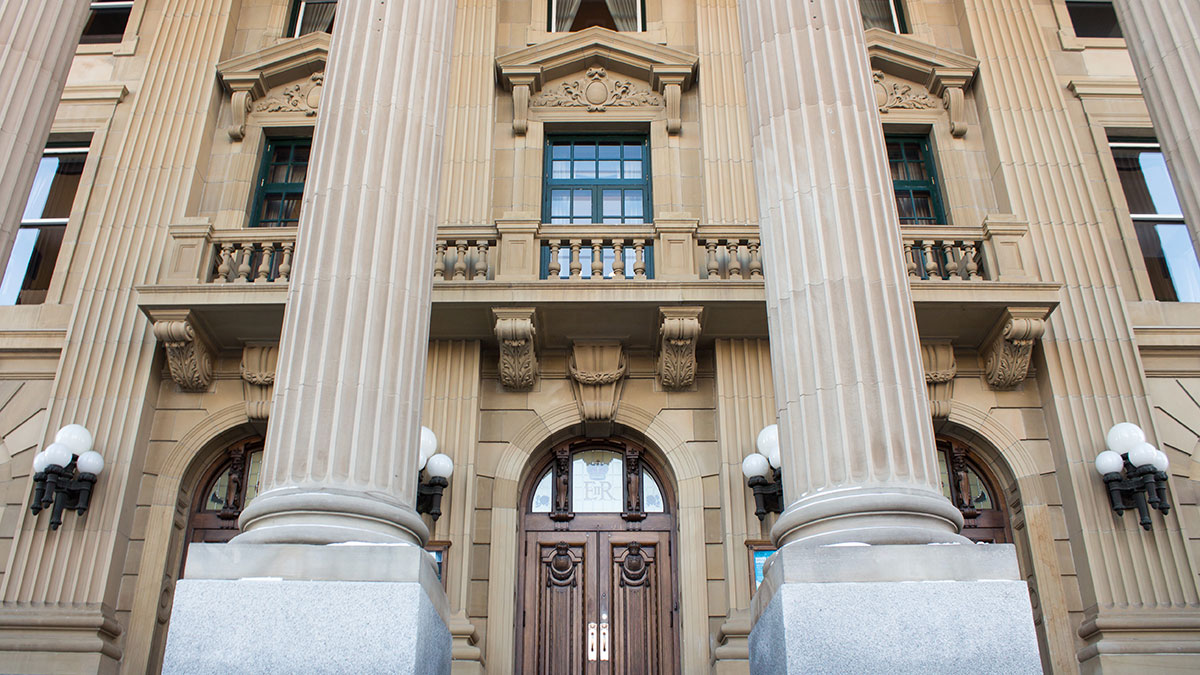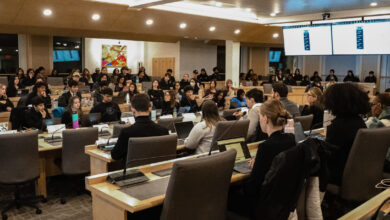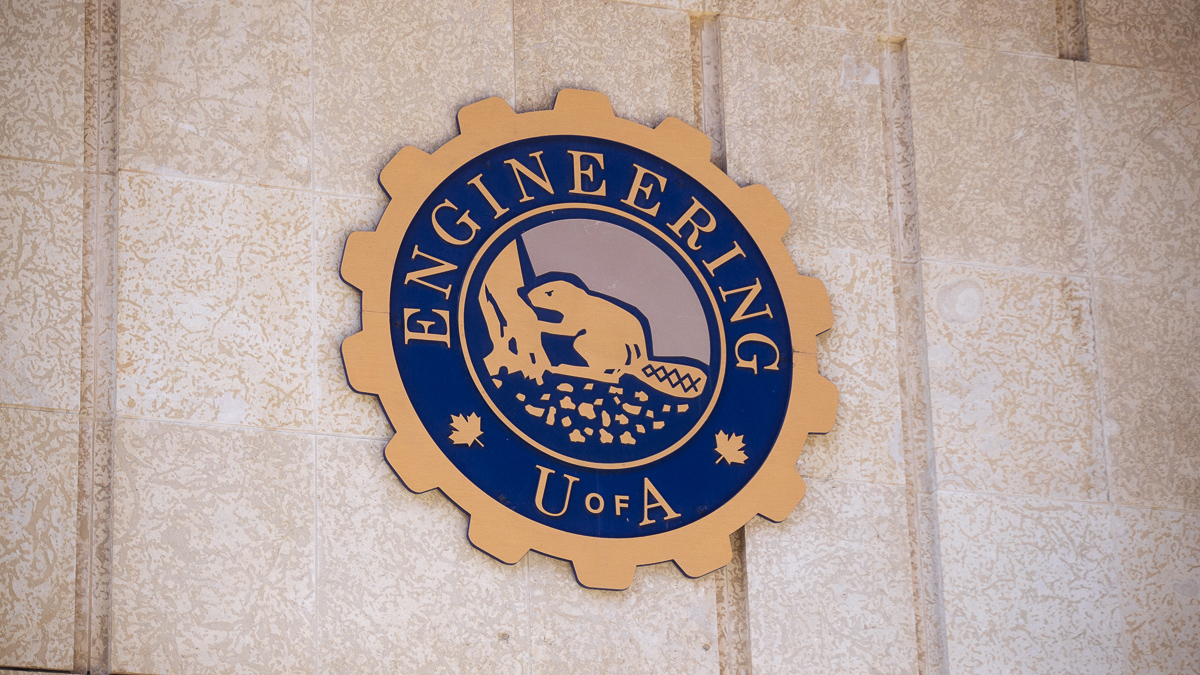Reactions to Budget 2025: It “just doesn’t cut it”
The Gateway spoke to University of Alberta President and Vice-Chancellor, Bill Flanagan, the UASU and AAUSA presidents, the NDP shadow minister of advanced education, and ASEC about their reactions to Budget 2025's affect on post-secondary.
 Christina Varvis
Christina VarvisThe Government of Alberta’s Budget 2025 keeps the University of Alberta’s provincial operating grant at $436.6 million — the same number as the previous three budget years.
The U of A is facing significant financial pressures because of the stable operating grant, the additional $222 million in cuts to the U of A’s operating grant since 2019, and inflationary pressures. The Gateway spoke to key U of A stakeholders and representatives about their reactions to Budget 2025’s impact on post-secondary and the U of A.
Flanagan says there are “a lot of revenue challenges for the university” as “costs continue to rise”
On February 28, President and Vice-chancellor Bill Flanagan released a statement in response to the release of Budget 2025.
“Budget 2025 held some excellent news for the U of A,” Flanagan said in an interview with The Gateway.
Budget 2025 allocated $100 million towards the redevelopment of the U of A’s Biological Sciences building. The U of A will also be contributing $100 million to the project through the launch of a fundraising campaign, in addition to funds from the U of A’s Strategic Investment Fund, according to Flanagan. This $200 million investment will be part of a “$500 million refit of the building,” Flanagan stated.
“The 100 million dollars is by far the largest capital commitment to any post-secondary institution (PSI) in Alberta in this budget round,” Flanagan said. “That’s an important win for the U of A, but I recognize the larger challenges that still remain.”
In addition to the Biological Sciences building, the U of A “received the second year of funding for the replanning of the Butterdome,” according to Flanagan. He said that the planning will proceed in summer 2025, with construction beginning in fall 2025.
Flanagan said that there are “a lot of revenue challenges for the university,” especially as costs “continue to rise.” He said the university recognizes “how important [sustainable and predictable funding] is for our students, as our costs continue to rise and our revenues are not matching it.
“We don’t want to see the burden of this fall upon our students. We want this to be a shared burden and for the province to step up and fund appropriately,” he said.
Flanagan said that the U of A will “continue to press the other funding priorities related to key areas of need at the university.” He mentioned enrolment pressures, research activities, and consolidating more space on campus as priorities for the U of A.
With the U of A’s operating grant remaining “flat for the fourth year in a row,” Flanagan said that funding for the U of A’s plan to increase enrolment by 16,000 students by 2033 is a concern.
“The key is to continue to make the case about the impact of the U of A,” he said.
“We remain committed to the growth ambitions in SHAPE, but we recognize that we cannot grow without partnership with the province and funding these spots. If we’re able to secure sustainable funding for enrolment growth, what this means is that we can hire the faculty and invest in capital improvements to continue to build a really strong student experience,” Flanagan stated.
In response to the U of A’s operating grant remaining the same as Budget 2024, the U of A is “implementing some strategic cuts in the administrative functions of the university” and also looking at ways to grow revenue, such as “parking and tuition,” according to Flanagan.
The provincial government capped domestic tuition increases to two per cent. Flanagan said that the U of A will be proposing another two per cent increase on domestic tuition.
“The two per cent is still less than inflation, and with our operating grant being flat, the tuition increase will help,” Flanagan stated.
Flanagan said that sustainable and predictable operating funding for the university and domestic enrolment growth funding are two things that the U of A “will focus on very closely in the next year’s budget conversations.”
Operating grant remaining flat will continue to put financial pressure on the U of A, UASU president says
Lisa Glock, University of Alberta Students’ Union (UASU) president, said that while the investment in the Biological Sciences building and Campus Saint-Jean (CSJ) are positives, she remains concerned about the lack of inflation adjustment to the Campus Alberta Grant.
The UASU and 24 other Alberta PSI student associations signed an open letter on February 11 to the provincial government. The letter called for the restoration of PSI operating grant funding to 2019-levels.
“That inflation point is really important because if we don’t move post-secondary funding up by inflation, it’s essentially just a cut,” Glock said. “Even though we technically get a little bit more money this year, it’s not actually more money because inflation negates all those increases.”
Glock said that she is expecting to see Exceptional Tuition Increases (ETIs) next year, as well as “a continued push on international student tuition that we’re going to have to fight again.”
“[The U of A is] going to be pulling these levers on tuition because they don’t have the budget from the province to be able to be more lax on us with that,” Glock said.
“The U of A isn’t a money sink, it’s an investment. We are continuously trying to push that idea to the province to show that [the U of A] is a really valuable place to be putting their money.”
Provincial government is “playing with fire” with its lack of PSI funding, AASUA president says
Gordon Swaters, president of the Association of Academic Staff of the University of Alberta (AASUA), said that there is a twofold problem in which the provincial government is not providing sufficient funding to PSIs and the U of A’s senior administration “is not making the right budgeting choices.”
“It is [AASUA’s] opinion that administration is allocating too much funding towards high paid executive administrators, and not enough to the frontline teaching and research,” Swaters said.
Swaters said that Flanagan “played it safe” in his response to Budget 2025 by “[highlighting] the sliver of good news” within it.
According to Swaters, a lack of government support will impact the university’s ability to maintain its standing.
“It takes a long time to build the kind of reputation we have at the U of A, but it can be squandered in a few short years if you strangle it from resources,” Swaters said.
“I think we’re playing with fire if we say to the taxpayers in Alberta today, your children can’t go to the U of A, and the principal reason why is because the government is not funding the student positions at the U of A.”
Alberta NDP shadow critic for advanced education says the budget “just doesn’t cut it”
David Eggen is an Alberta New Democratic Party (NDP) member of the legislative assembly (MLA) for Edmonton–North West and shadow critic for advanced education. Eggen said the United Conservative Party (UCP) government “continues to not take their responsibility to properly fund and support post-secondary.”
At the budget press briefing on February 27, The Gateway asked Minister of Finance, Nate Horner, what factors would make the government consider restoring full or partial funding to the post-secondary operating grant. Horner replied that “a more optimistic forecast would help.”
Eggen said that when there’s economic uncertainty, the “government’s responsibility is to backstop people to feel more secure with their health, education, [and] employment opportunities.”
“I think this UCP government has a big job to do. This budget generally just doesn’t cut it.”
Eggen added that those currently in the kindergarten to grade 12 system will require post-secondary placements when they graduate. He said that preparations for an increase in demand for capacity needs to begin now.
“Looking for a more affordable post-secondary education, to keep tuition down, and to make sure there are spaces for people to access education. That’s the way to build your economy,” Eggen said. “The most important resource we have is our people. If they’re not being supported through being able to better themselves through post-secondary … all other efforts are likely to fail.”
ASEC “saddened” to see Budget 2025’s decreased government revenue for public PSIs
In a statement to The Gateway, the Alberta Students’ Executive Council’s (ASEC) chair, Anna Dau, said that although ASEC was “glad to see” that Budget 2025 brought “some improvements” to the post-secondary sector, they were “saddened” to see that the “per cent [of] government revenue for public post-secondaries has decreased to just 42 per cent.”
According to ASEC, students across the province “are feeling the pinch of dwindling student services, sparse course offerings, and class sizes.”
ASEC was also among the signatories of the open letter to the province.
“We understand there are many uncertainties and demands facing our province, but we reiterate our messaging from last month’s open letter, that our future cannot afford to leave post-secondaries behind.”
“ASEC is committed to continuing our advocacy for funding that reflects a public post-secondary system and empowers world-class education in Alberta. We look forward to sharing how critical this is to the panel led by Dr. Mintz and decision-makers over the next year.”




